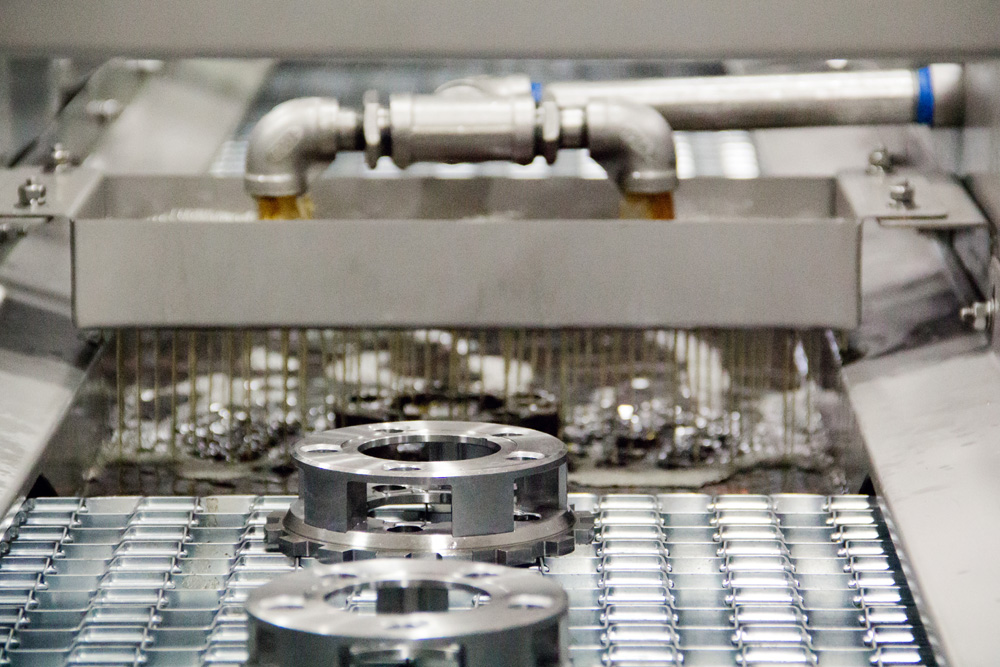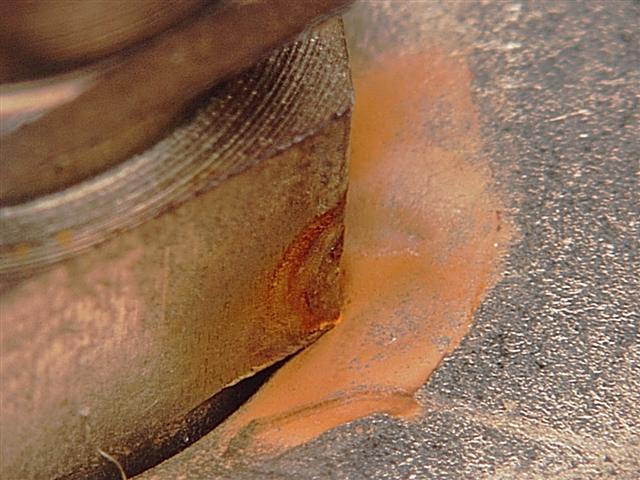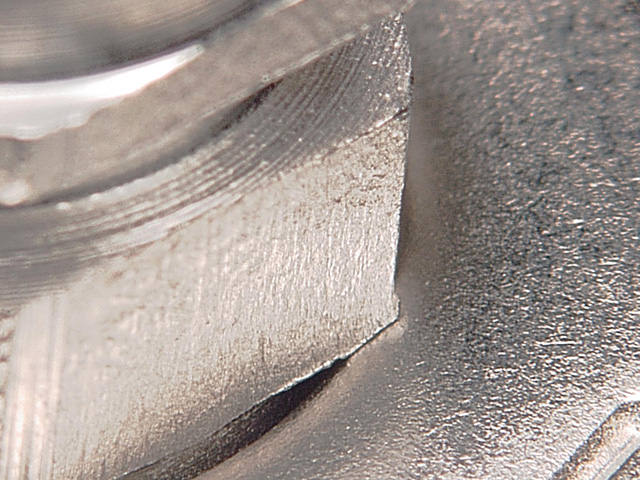
Corrosion on parts can cause a wide range of problems before, during and after production. Corrosion can lead to problems with paint or other coating adhesion, misfit for assembly, and can reduce visual appeal. This is a common concern and one that can cause expensive disruptions in the supply chain if not properly prevented.
Corrosion on metal occurs in many forms and can be categorized into localized and general forms. Corrosion is the result of the oxidation of metal, or in layman’s terms, the result of a chemical reaction between metal and its surrounding environment which leads to the deterioration of the metal.
Localized corrosion includes pitting, crevice corrosion, and filiform corrosion. Pitting is the occurrence of small holes or cavities appearing on metal surfaces. Crevice corrosion forms in shielded areas such as under washers, gaskets, fastener heads, etc. Filiform corrosion happens when water gets underneath a coating such as paint.
A general form of corrosion that most people are aware of is rust. Rust is an electrochemical event that occurs when a metal is exposed to water. Some action, such as applying a preventive coating, must disrupt this sequence in order to prevent rust from forming. Corrosion on parts can cause a wide range of serious problems for manufacturers. If you work with metals, prevention is the key to ensuring quality finishes and satisfied customers.
Scott Fouts, Regional Manager for Kyzen Chemical Company highlights a few common causes of corrosion:
- High humidity conditions in the factory
- Shipping to high humidity locations
- Not using the proper shipping containers
- Trying to wash multiple metals with different chemistry packages within the same wash cycle.
The picture below depicts flash corrosion which can happen when a steel part dries completely after being cleaned without corrosion prevention. One method to combat this is to have a corrosion package built into the cleaning chemistry.


After cleaning with no corrosion prevention After cleaning with corrosion prevention
(Photos courtesy of Kyzen)
Three common mistakes that Scott sees in the field are:
- Not identifying the specific metal with the proper corrosion inhibitor.
- Not identifying the proper percentage of concentration needed for a specific metal.
- Not maintaining the proper concentration.
Humidity testing is one method that aids in determining the effectiveness of a corrosion inhibitor. Parts can be placed in a climate controlled humidity chamber for various durations of time, typically 30, 60, or 90 days. The chamber creates a harsh environment that speeds up the corrosion process. Parts can be checked periodically to determine the approximate shelf life of the inhibitor on the customer’s shelf.
Once the proper inhibitor has been identified, maintaining a consistent application process is critical. Routine checks of the effectiveness of the cleaning chemistries and inhibitors will insure that the inhibitor is performing to the required shelf life. Three common methods for monitoring chemical effectiveness are conductivity, titration and testing with a refractometer. Water based parts washers will lose water through evaporation. Chemical injection systems help to automate the chemical addition process by metering chemical when water is automatically introduced to the machine. Automated chemical injection removes the need to manually add chemical, but routine testing is critical to insure the best result.
In order to prevent corrosion on metal parts several factors need to be considered. What is the best inhibitor for the type of metal I am working with? How will the parts be cleaned to prepare the surface and how will the corrosion inhibitor be applied? How long do I need the corrosion inhibitor to last? The Sales team at Alliance can help in answering your questions concerning, parts cleaning, corrosion inhibitors and determining the proper equipment for your application.
Scott has more great insights on corrosion in his video “Fighting Corrosion, A Global Problem” which can be seen at: http://www.kyzen.com/fighting-corrosion-global-problem/. Scott will also be presenting at PMTS/PCx. To learn more and attend his educational session please visit http://www.kyzen.com/visit-pmts-pcx2017/.